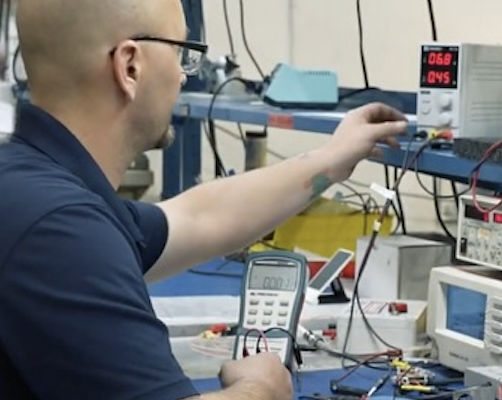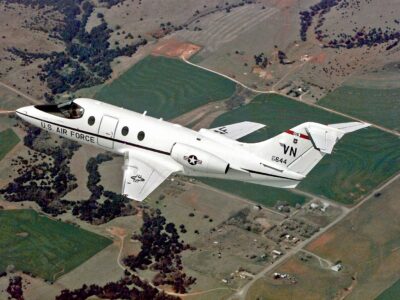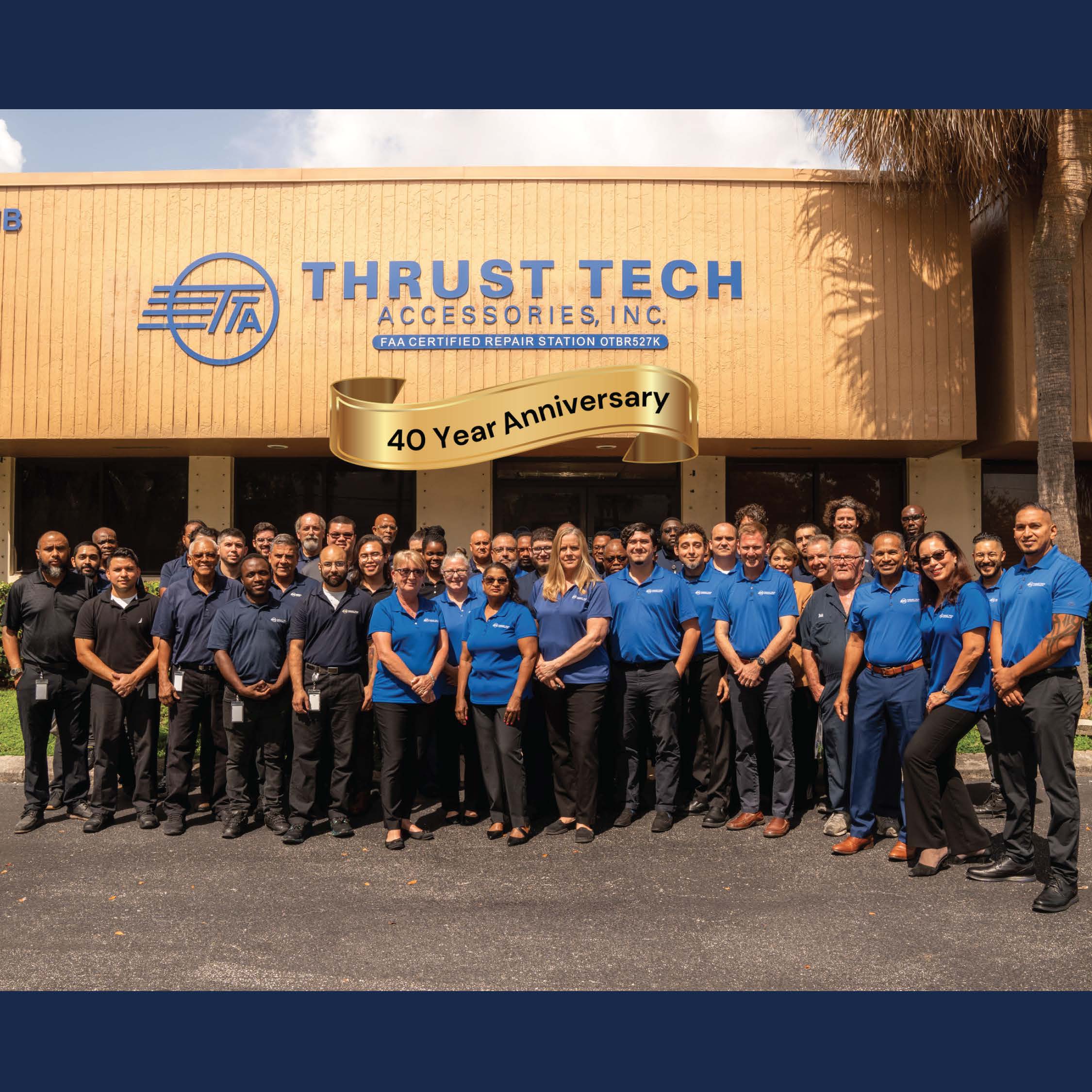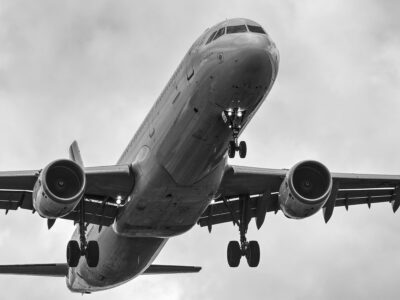
In this ongoing series, Thrust Tech Accessories (TTA) highlights aircraft types presently in service across the globe. We explore the important roles that such venerable aircraft as the Sabreliner have played and continue to play in the industry.
Plus, we highlight the key role that MROs like TTA play behind the scenes in providing overhaul, repair, and modification of engines and airframe accessory components. The goal is to keep such aircraft flying properly and safely—and long into the future.
History of the Sabreliner
Certainly, one of the most legendary commercial mid-sized business jets is the North American Sabreliner, later sold as the Rockwell Sabreliner. More than 800 Sabreliners were manufactured over the decades, since they were first introduced in 1959 Notably, the aircraft originally got its name because its tail and wings were similar to North American’s F-86 Sabre jet fighter plane, despite its ultimate service use for commercial, civilian and military purposes.
Rooted in Military Service
Some 200 Sabreliners, or about one fourth of all those built, entered service specifically as military jets. Starting in1959, military variants of the T-39 Sabreliner began service with the U.S. Air Force, U.S. Navy and U.S. Marine Corps. Military uses included personnel transport and combat readiness training, with propulsion by two Pratt & Whitney JT12A-8 turbojet engines. Sabreliners were also used to provide key military support in the Vietnam War and today, the T-39N and T-39G are still used by the U.S. military, NATO and other allies for student flight officer or navigator training.
Start of the Civilian Program
Sabreliner’s civilian prototype, model NA-265, had its first test flight on September 16, 1958, and, powered by two General Electric YJ85 engines, was certified for commercial aviation use in1963.
Subsequent civilian series models, such as the Series 40, were enhanced to offer more speed and a roomier passenger cabin. A later Series 70 added more cabin height, and the Series 75A (also called Series 80) benefited from using General Electric CF700 turbofans for propulsion.
The Rockwell Era
Corporate-wise, North American merged with Rockwell Standard in 1973, and in 1976, Rockwell International redesigned Sabreliner’s wing to become the first “supercritical wing” in U.S. service. The wing sizably reduced drag divergence, delayed the formation of shock waves over the aircraft at subsonic speeds and improved overall transonic flight efficiency.
Series 65 of the Sabreliner series received both the Mark V wing and Garrett TFE731 turbofan engines. Subsequent Sabreliner 60 and 80 models were also retrofitted with this wing. Those became the Series 60A (STC SA687NW) and Series 80A (STC SA847NW).
In the early 1980s, Sabreliner production ended. The Sabreliner division was sold to a private equity firm, which formed Sabreliner Corporation to provide continuing support for aircraft operators.
Sabreliner Use Today
Today, the Sabreliner remains in service in both military and civilian operations. In terms of business use, it typically has a minimum crew of two, and can carry up to 7-10 passengers, depending on the series. Its maximum speed is 550 mph, and it has a cruising speed of 435-500 mph. For both the military and civilian use, it also continues to serve as an important tool for student flight officer and navigator training.
With exceptional speed and range, the Sabreliner 40 business jet can land at most mid-sized airports. Plus, its aerodynamic body design smooths the ride for passengers as the effects of turbulence are reduced.
One unique factoid? Because the Sabreliner is derived from the F-86, it’s also the only business jet rated for aerobatics. Several companies use it to offer inflight upset-recovery training. That’s designed to train even experienced commercial pilots to alleviate a loss of control or recover from a full stall or inverted flight.
Today, the Sabreliner remains an important part of corporate, private and business usage. It’s not surprising as Business Jet Traveler magazine has identified it as one of the top business jets to have shaped the industry.
MRO Services for Sabreliners
To maintain a Sabreliner’s operational readiness and extend its service life, comprehensive maintenance, repair and overhaul (MRO) procedures are crucial to ensure that it continues to successfully soar in the skies.
With a focus on servicing many smaller components of this airframe, Thrust Tech Accessories is proud of its unique role among the panoply of service providers worldwide that work in concert to keep this aircraft type in tip-top condition. TTA provides specialized services on multiple Sabreliner components, from starter generators to wheel driven units and ignition exciters, among others.
To understand the comprehensive range of MRO work required to ensure this exceptional aircraft continues to serve effectively, it’s important to recognize the multiple levels of MRO testing and activities performed throughout the life of the Sabreliner.
Routine & Intermediate Maintenance
To ensure Sabreliner aircraft remain airworthy and operational, routine and intermediate maintenance checks are performed on a specific, scheduled basis. It is during these checks that technicians will determine if any number of worn or damaged components must be replaced or repaired. This is where TTA kicks into high gear.
Operators around the world rely on certified MRO facilities like ours in Fort Lauderdale to provide fast-turn maintenance services that aim to prevent system failures that could lead to unscheduled downtime or in-flight emergencies. Technical capabilities to repair and maintain are critical aspects of maintaining the health and safety of these, and TTA’s XX years of experience mean that downtime and expenses incurred are kept to a minimum.
About Thrust Tech Accessories
Thrust Tech Accessories would enjoy the opportunity to explore cost-effective measures to meet the specialized airframe needs of Sabreliner operators. A recipient of the U.S. Department of Labor’s 2024 Gold HIRE Vets Medallion Award, TTA’s Fort Lauderdale-based MRO team offers capabilities such as testing, repair service, overhaul service, and of course fast turn-around times. TTA supports a number of private and business aircraft operators as well as regional airlines, along with overseas air carriers and rotorcraft operators in numerous countries around the globe.
To find out more about TTA’s wide-ranging capabilities to support your fleet and to obtain competitive program bids, please send an email to TTAsales@ThrustTech.com or call 954-984-0450.






